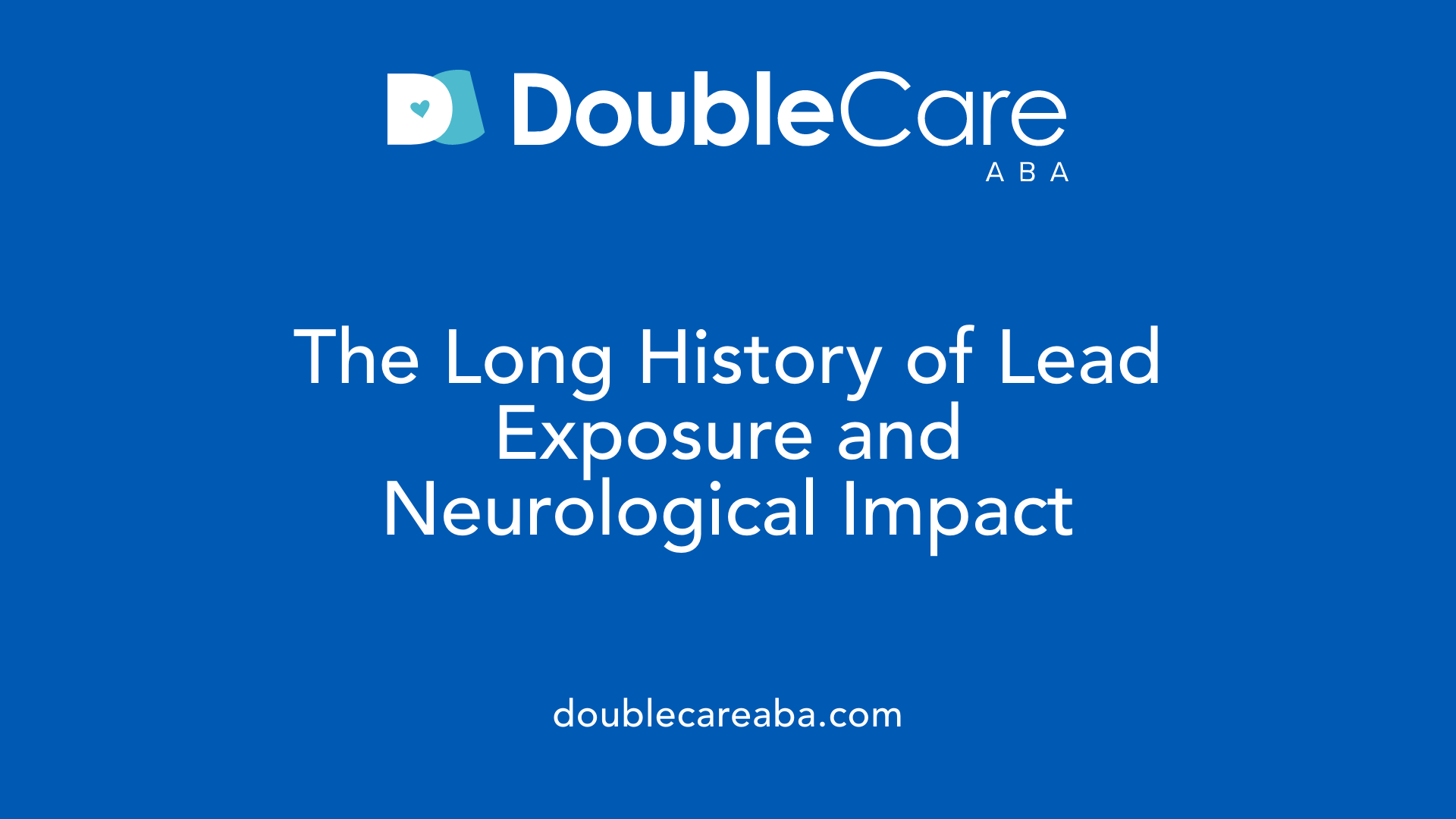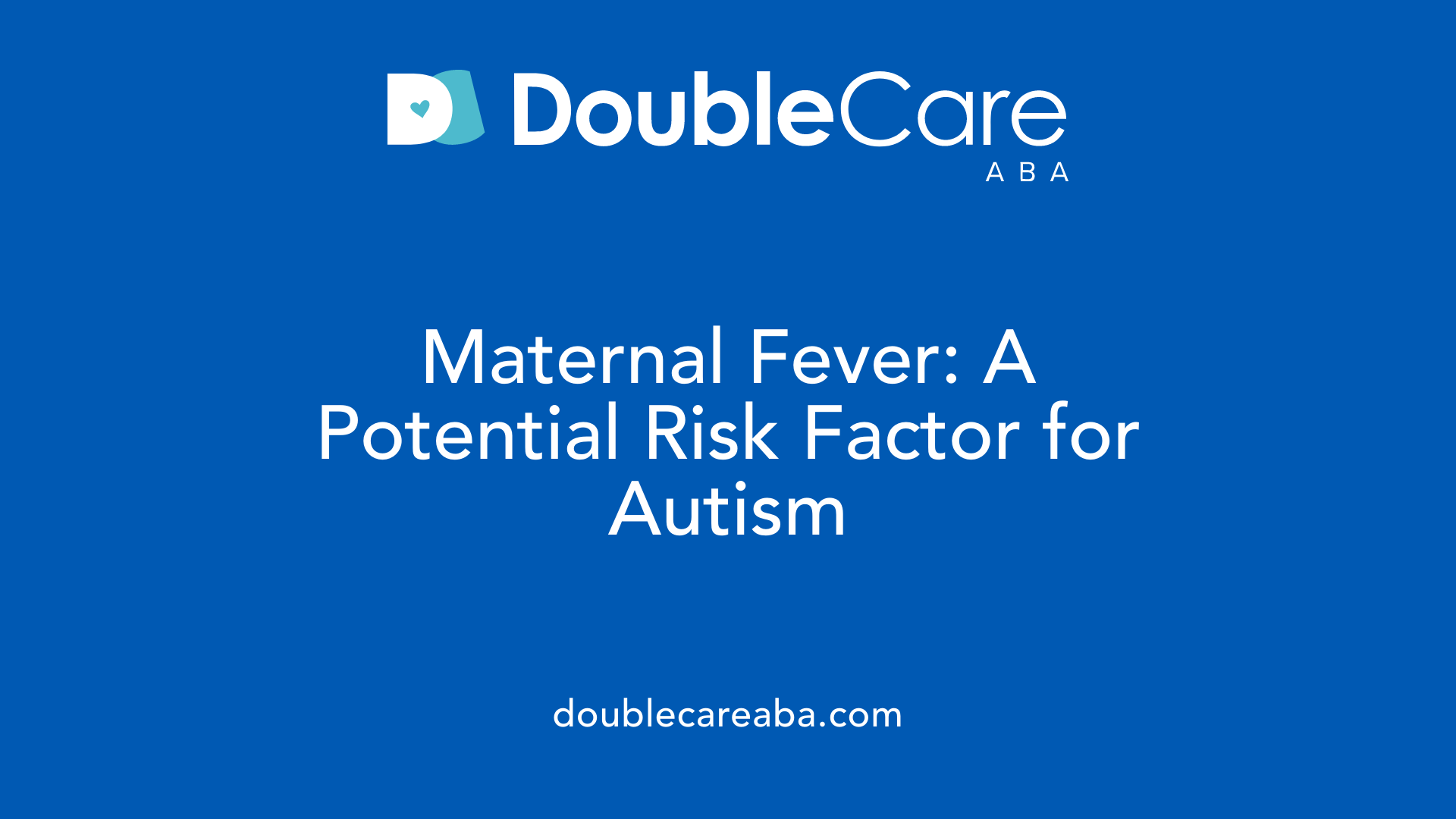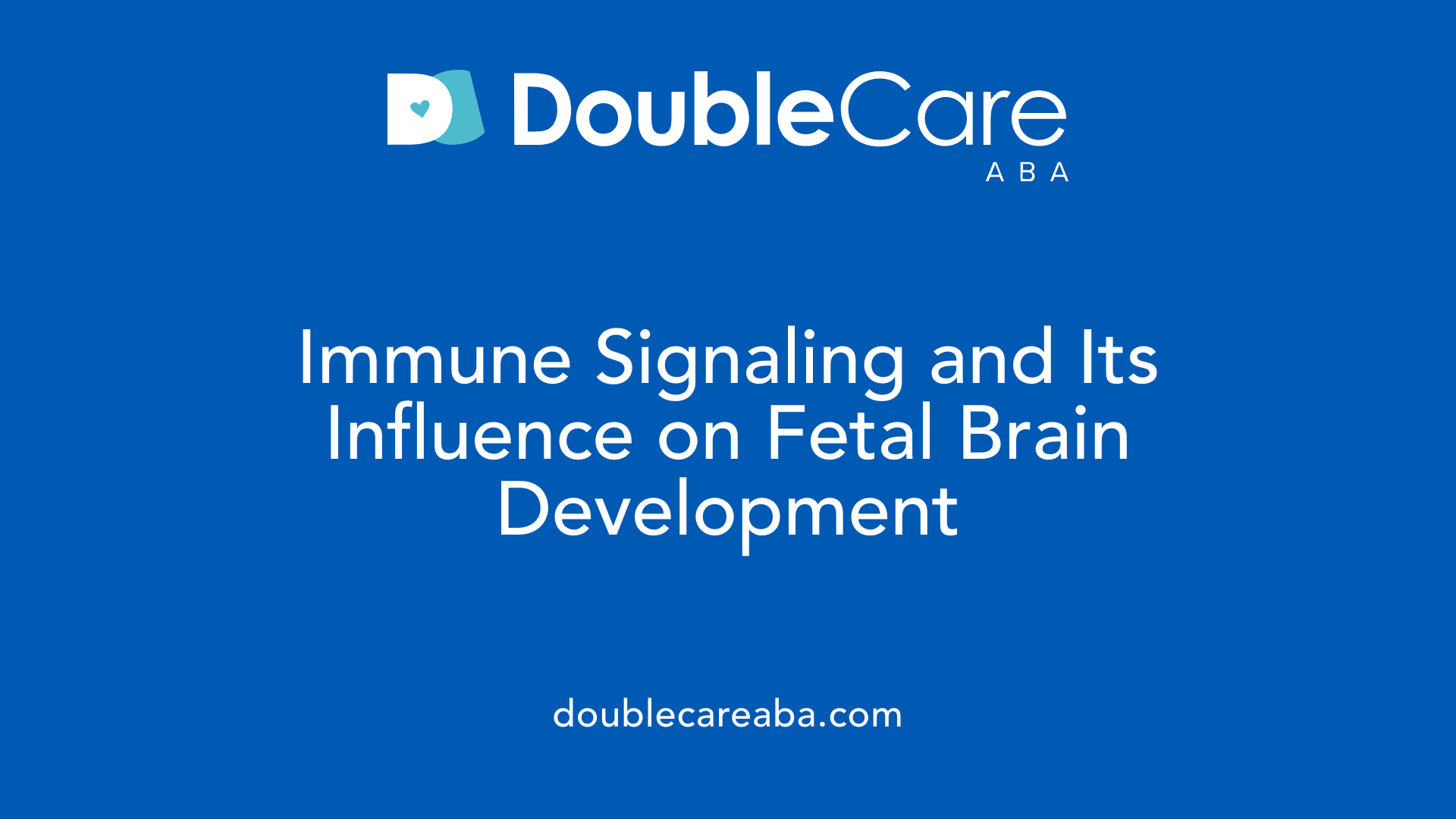Lead Exposure & Fevers During Pregnancy Lead to Autism
Investigating the Prenatal Factors Associated with Autism Spectrum Disorder

Understanding How In Utero Exposures Affect Neurodevelopment
Recent scientific research highlights the significant impact of environmental and biological factors during pregnancy on the risk of autism in offspring. Among these factors, lead exposure and maternal fevers have emerged as areas of critical concern. This article explores the evidence linking these prenatal elements to autism, examining potential mechanisms, historical context, and preventative strategies.
The Genetic vs. Environmental Contributions to Autism

What proportion of autism cases are caused by genetic factors?
Research indicates that genetic components are a major influence in the development of autism spectrum disorder (ASD). Studies estimate heritability to be between 50% and 90%, meaning that genetics explain a significant portion of the risk. Twin studies are particularly compelling: they show that if one identical twin has autism, the other has a high chance of also being diagnosed, much more than fraternal twins.
Numerous genes are associated with autism, especially those involved in brain growth, neural connections, and synaptic function. Some genetic mutations are inherited from parents, while others happen spontaneously, known as de novo mutations. These new mutations are often linked to mutations in the sperm of older fathers.
Family research also supports a genetic role: autism tends to cluster within families, and many individuals carry genetic variations that increase risk but do not show symptoms themselves. This is partly explained by the 'female protective effect,' where females may require a higher genetic load to develop autism.
While environmental factors such as prenatal infections, exposure to toxins, and maternal health influence the likelihood of ASD, current evidence emphasizes that genetics play a predominant role in most cases. Understanding the balance of these influences helps shape approaches to diagnosis, intervention, and potentially, prevention.
For further reading, searching for "Genetic factors and heritability in autism" can provide in-depth scientific analyses and recent studies exploring these genetic contributions.
Historical Presence of Lead Exposure and Its Neurotoxic Effects

Can lead exposure during pregnancy cause autism?
Current scientific evidence does not establish a direct causal link between lead exposure during pregnancy and the development of autism spectrum disorder (ASD). While lead exposure is known to be harmful to the developing brain of a fetus, it predominantly results in cognitive deficits, behavioral issues, and neurodevelopmental delays.
Research has highlighted the widespread presence of lead throughout human history. For instance, scientists have discovered lead in the teeth of Neanderthals dating back approximately 250,000 years, indicating that humans have been exposed to this toxic metal for millennia. This long history of exposure underlines the persistent nature of lead contamination but does not directly tie it to autism.
Biological studies using modern techniques, such as laser analysis of baby teeth, suggest that chemical exposures like lead can leave markers that help researchers investigate neurodevelopmental disorders. Mount Sinai researchers have proposed that such markers could someday elucidate autism origins.
However, despite the harmful effects of lead on neural development—such as impairing brain maturation, affecting neurotransmitter systems, and disrupting neural connections—there is no definitive evidence linking prenatal lead exposure directly to autism. More focused research is needed to explore any possible connection.
In summary, although lead exposure can cause severe neurotoxic effects and has been present in the human environment for thousands of years, it is not currently proven to be a cause of autism. The emphasis remains on minimizing exposure to protect overall fetal brain health.
More information
Search query: Lead exposure and neurodevelopmental health
The Link Between Maternal Fever During Pregnancy and Autism Risk

Can fever during pregnancy cause autism?
Emerging research suggests that having a fever during pregnancy, especially during the second trimester, is linked to a higher chance of the child developing autism spectrum disorder (ASD). Studies show that mothers experiencing three or more fevers after the twelfth week of pregnancy can see their child's ASD risk increase by over 300 percent.
The connection appears to involve maternal immune responses and inflammation. When a mother develops a fever, it may reflect an immune system reaction to infection, which can release signaling molecules like cytokines. These immune molecules, such as IL-17a, can influence fetal brain development, possibly leading to ASD.
While the association is strong, it’s important to note that current evidence is mainly correlational. This means fever might be a marker for underlying infections or immune activity rather than a direct cause of autism itself. Some studies suggest that taking anti-fever medications like acetaminophen can slightly reduce this risk, but findings are not conclusive.
Understanding whether fever directly causes ASD or simply indicates other underlying risks remains a research priority. Preventive strategies focusing on managing infections and inflammation during pregnancy could be key in reducing the incidence of autism.
Molecular Mechanisms: The Role of Immune Signaling Molecules

Can fever during pregnancy cause autism?
Fever during pregnancy, especially during the second trimester, has been linked to a notable increase in the risk of autism spectrum disorder (ASD) in children. Research from Columbia University's Mailman School of Public Health involving over 95,000 children found that mothers experiencing three or more fevers after the twelfth week of pregnancy had children with over a 300 percent higher risk of developing ASD.
The study also showed that the overall odds of ASD increased by approximately 40 percent in cases of maternal fever, with the highest risk associated with fever during the third trimester. These findings suggest that maternal immune responses and inflammation may play a role in disrupting fetal neurodevelopment.
However, it is important to understand that association does not prove causation. Fever might be a marker for infections or immune activation that could influence fetal brain development. The use of anti-fever medications such as acetaminophen appears to exert a slight protective effect, but evidence is limited, and the impact of these medications on the development of ASD remains under investigation.
Research continues to explore whether immune molecules involved in inflammation are directly responsible for neurodevelopmental disruptions. For example, experiments in mice show that immune signaling molecules like IL-17a are released during inflammatory responses, impacting brain function and behavior.
While the exact mechanisms are not fully understood, the evidence underscores the importance of monitoring and managing maternal health during pregnancy to potentially reduce ASD risk. Preventing infections and inflammation during critical windows is a crucial area for ongoing research.
Protective Factors: The Role of Folic Acid and Micronutrients
Can lead exposure during pregnancy cause autism?
Current evidence does not confirm a direct link between lead exposure during pregnancy and autism spectrum disorder (ASD). While lead can negatively affect fetal brain development, causing cognitive and behavioral issues, it has not been definitively identified as a cause of autism. Studies have shown that exposure to environmental toxins like lead may influence neurodevelopment, but the precise relationship with ASD remains unclear. Importantly, research efforts such as those discussed in recent studies mainly focus on understanding potential biological markers and environmental influences on autism, rather than establishing causality.
Folate and neurodevelopment
Folic acid, a vital B-vitamin, plays a crucial role in early brain development. Adequate folate intake before conception and during pregnancy has been associated with a reduced risk of neural tube defects and supports healthy neural development. Research indicates that higher maternal folate levels can help protect the developing fetus from neurotoxins and environmental stressors. For example, folate may mitigate some detrimental effects of prenatal lead exposure, reducing the likelihood of neurodevelopmental problems.
Impact of micronutrients on lead toxicity
Micronutrients such as folate significantly influence how the body handles toxic metals like lead. Adequate folate intake has been shown to lessen the neurotoxic effects of prenatal lead exposure, thereby potentially decreasing autistic-like behaviors in children. In a study involving pregnant women, higher plasma folate levels during the third trimester were linked to lower autistic-like behaviors in their children, especially when lead levels were high. This suggests that ensuring sufficient micronutrient intake during pregnancy can serve as a neuroprotective strategy.
Prenatal dietary supplementation
Prenatal supplements containing folic acid and other essential micronutrients are recommended by health authorities to support fetal brain health. They help reduce the risk of neurodevelopmental disorders, including ASD, by strengthening the fetus's resilience against environmental toxins and inflammation. Because no level of lead exposure has been deemed safe, maintaining proper nutrition and supplementing with folic acid can help buffer some of the adverse effects associated with toxic exposures.
| Micronutrient | Role in Neuroprotection | Related Findings |
|---|---|---|
| Folic Acid | Supports neural tube closure, reduces neurotoxicity | Attenuates effects of lead, reduces autistic behaviors |
| Iron | Prevents anemia, supports myelination | Essential for brain development, interacts with lead |
| Vitamin D | Modulates immune response, neurodevelopment | Deficiency linked to increased ASD risk |
Ensuring sufficient intake of these micronutrients during pregnancy is a practical approach to fostering healthy fetal development and potentially reducing the risks associated with environmental exposures.
Other Environmental and Biological Factors Influencing Autism Risk
Can lead exposure during pregnancy cause autism?
Current scientific evidence does not establish a direct causal link between lead exposure during pregnancy and the development of autism spectrum disorder (ASD). While lead exposure can harm the developing brain and nervous system of the fetus, leading to cognitive and behavioral problems, it is not specifically identified as a cause of autism.
Research has discovered lead in ancient human teeth, such as those of Neanderthals, demonstrating that lead exposure has existed for thousands of years. However, this does not imply a direct connection to autism, especially in the context of maternal exposure.
Recent studies have focused on chemical exposures like lead and their potential impact during pregnancy. For instance, higher maternal blood lead levels during the third trimester have been associated with increased autistic-like behaviors in children. Nonetheless, this association does not confirm causality.
Overall, while lead can negatively affect brain development, more research is necessary to determine whether prenatal lead exposure specifically increases the risk of autism. At present, lead toxicity is recognized as a neurotoxic concern, but it remains unproven as a direct cause of autism.
Synthesis and Future Directions in Prenatal Autism Research
How do complex interactions between immune and nervous systems influence the risk of autism?
Recent studies highlight that the immune system plays a crucial role in neurodevelopment. During pregnancy, immune responses such as inflammation and cytokine release can affect fetal brain development. For example, molecules like IL-17a, released during inflammatory responses, have been shown to suppress certain brain regions linked to social behavior in mice. Blocking IL-17a or its receptors prevents behavioral issues, underscoring its importance. Additionally, maternal immune activation from infections such as rubella, cytomegalovirus, or influenza can trigger cytokine pathways associated with ASD risk.
This immune-neural interaction suggests that immune signaling molecules act as neuromodulators during critical developmental periods, influencing neural circuitry and behavioral outcomes. These discoveries open avenues for understanding how immune dysregulation might contribute to neurodevelopmental disorders like autism.
What are the neurodevelopmental effects of prenatal exposures like lead, infections, and fever?
Multiple prenatal exposures have been linked to increased ASD risk. For instance, higher maternal blood lead levels during pregnancy, especially in the third trimester, correlate with autistic-like behaviors in children. Folate supplementation can mitigate some of these neurotoxic effects. Similarly, maternal infections during early pregnancy—viral, bacterial, or parasitic—are associated with ASD, possibly through immune responses or direct pathogen effects.
Fever during pregnancy, particularly in the second and third trimesters, has emerged as a significant risk factor. Studies indicate that mothers experiencing multiple fevers after the 12th week of pregnancy have over three times the risk of having a child with ASD. The use of antipyretics like acetaminophen shows limited mitigation, while ibuprofen may be more protective, though data are inconclusive for the latter.
These exposures may disrupt normal neurodevelopment by triggering inflammatory pathways, compromising mitochondrial function, or altering the maternal microbiome—all of which can impact fetal brain maturation.
What preventative strategies and research gaps are emerging in prenatal autism studies?
Preventive strategies are centered on minimizing harmful exposures during pregnancy. Ensuring adequate folate intake has shown promise in reducing lead-related neurotoxicity. Managing maternal infections promptly and judicious use of antipyretics might lower ASD risk associated with fever.
Despite advances, significant research gaps remain. It's unclear how to precisely modulate immune responses without impairing necessary defenses. The role of maternal microbiota is an emerging area, with potential for probiotic interventions. Additionally, understanding genetic factors, such as maternal folate metabolism genes, in relation to environmental exposures like lead is ongoing.
Future research should focus on detail-rich longitudinal studies, exploring how combinations of exposures and immune responses influence neurodevelopment. Developing biomarkers, like analyzing baby teeth for chemical signatures, offers promising avenues for early prediction and intervention.
| Exposure Type | Associated Risks | Mitigation Strategies | Notes |
|---|---|---|---|
| Lead in pregnancy | Autism-like behaviors | Folate supplementation | Long-standing contaminant, no safe level established |
| Fever in pregnancy | ASD risk increases 3-fold | Antipyretics, infection control | Timing during trimesters is crucial |
| Infections (viral/bacterial) | Increased ASD risk | Vaccinations, prompt treatment | Cytokine pathways like IL-6 and IL-17 involved |
Understanding and interrupting the pathways linking prenatal exposures to ASD represent a vital direction for future research, aiming to protect fetal neurodevelopment and reduce autism incidence.
Moving Forward with Prevention and Understanding
Emerging evidence underscores the complex interplay of genetic, environmental, and immune factors in the development of autism. Prenatal exposures such as lead and maternal fevers can influence neurodevelopment through mechanisms involving immune signaling molecules like IL-17a, oxidative stress, and nutrient interactions. Public health strategies focusing on reducing environmental toxins, managing maternal infections, and ensuring adequate nutrition during pregnancy are crucial. Continued interdisciplinary research is essential to unravel the precise pathways and develop targeted interventions to mitigate risks and support optimal fetal brain development.
References
- Lead Exposure And Fevers During Pregnancy Can Lead To Autism
- Autism Risk Linked to Fever During Pregnancy
- Prenatal exposure to fever is associated with Autism Spectrum ...
- Is Maternal Influenza or Fever During Pregnancy Associated with ...
- Cracking the Fever-Autism Mystery | Harvard Medical School
- Exposure to Lead and Folate During Pregnancy Linked to Autistic ...
- Prenatal environmental risk factors for autism spectrum disorder and ...
- Which Parent Carries Autism? Understanding the Genetic Links
- NCBI
- Autism Risk Linked to Fever During Pregnancy
















